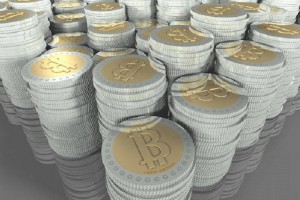Latest Posts
-
Finance 0
Brief Thoughts On Chinese Capital Flows Ahead Of The Year Of The Monkey
Chinese markets will be closed next week for the Lunar New Year celebration. However, over the weekend, China will report its January reserve figures. The market suspects that the PBOC burnt through another $120 bln of reserves. China’s reserves stood at $3.81 trillion in January 2015. There are expected to stand near $3.21 trillion as of the end of last month. This draw down, coupled with its trade surplus and the pressure on the currency has led many to express concerns about capital outflows from China. While we recognize there have been outflows, we suspect the market is exaggerating the outflows and misunderstanding the ...On February 5, 2016 / By Kurt Osterberg -
Finance 0
Core Employment (Age 25-54) Still Below January 2000 Level, 3 Million Below 2007
With the mainstream media going gaga over the headline unemployment rate of 4.9%, let’s put a spotlight on actual employment with a focus on those aged 25-54. Age group 25-54 ought to be out of school, not retired, not on disability, and working somewhere. Here are some chart that show what has actually happened. Core Employment 1950 to Present Core Employment Detail Core Employment vs. Population Core employment first surpassed the level we are at today in January of 2000, 16 years ago. Core employment hit a peak in January 2007 at 100.716 million. Today, core employment is 3,133,000 below January 2007. Today, core employment is 7...On February 5, 2016 / By Kurt Osterberg -
Finance 0
EC Yield Curve Flattening?
It pays, in many ways, to keep things simple. You know, the more I think about exchange-traded notes, the more I tend to dislike them. Oh, don’t get me wrong, there are some decent products out there. But there’s also an awful lot of dreck. Take the iPath U.S. Treasury Flattener ETN (NYSE Arca: FLAT) for example. The basic concept upon which the note is built is a fine one, actually. The note is supposed to supply unlevered and inverse exposure to the Barclays 2Y/10Y Yield Curve Index. The index tracks the returns of long and short positions in 2-year and 10-year Treasury notes, respectively. FLAT appreciates as the yield spread betw...On February 5, 2016 / By Kurt Osterberg -
Finance 0
S&P Could Reach 1,600 If This Gives Way, Says Joe Friday
S&P 500 tops in 2000 and 2007 took place 91 one months apart. Did another top take place 91 months after the 2007 top. So far it looks very possible. If you double that time frame, you get 182 months. What is the odds that the NDX 100 topped 182 months after the 2000 high, at the SAME price it hit in 2000? We applied monthly momentum to the charts above, reflecting that momentum for the S&P is back at 2000 and 2007 highs and turning lower and the momentum for the NDX is back at 2000 levels. Joe Friday Just The Fact…Both indices have traded sideways the over the past year plus. If support gives way of this sideways chop, the S&P ...On February 5, 2016 / By Kurt Osterberg -
Finance 0
Dividend Cut Risk Of The 6 Oil Super Majors
Oil prices have collapsed from highs of ~$120 per barrel to lows of ~$30 per barrel. Source: Finviz Tumbling oil prices have caused real problems for the oil industry. Marginal oil companies are facing solvency issues and are having to slash dividends. But what about the kings of the oil and gas industry – the 6 super major oil and gas corporations – are they also likely to cut their dividend payments? The 6 super majors are listed below: BP (BP) Eni SpA (E) Total SA (TOT) Chevron (CVX) ExxonMobil (XOM) Royal Dutch Shell (RDS-B) Of the 6, ExxonMobil is the largest. The image below shows the respective market caps of all 6 super majors...On February 5, 2016 / By Kurt Osterberg -
Finance 0
Are Wages All The Rage Or Is It Profit Taking?
It is quite uncommon to see the US dollar rising across the board on a significantly worse than expected Non-Farm Payrolls. Jobs advanced by 151K, worse than 190K expected and well below the average of recent months. The dollar initially dropped, with EUR/USD reaching 1.1244, USD/JPY continuing its reversal of the BOJ move and other currencies following suit. Yet this did not last too long. The market focus moved quickly to the inflation related figure: wages. The Fed is happy with jobs and putting its focus on inflation, as we’ve heard in the two recent rate statements. So, the emphasis of the Fed is read by markets. Average hourly earni...On February 5, 2016 / By Kurt Osterberg -
Finance 0
The Big Four Economic Indicators: January Nonfarm Employment
Official recession calls are the responsibility of the NBER Business Cycle Dating Committee, which is understandably vague about the specific indicators on which they base their decisions. This committee statement is about as close as they get to identifying their method. There is, however, a general belief that there are four big indicators that the committee weighs heavily in their cycle identification process. They are: Nonfarm Employment Industrial Production Real Retail Sales Real Personal Income (excluding Transfer Receipts) The Latest Indicator Data This commentary has been updated to include Nonfarm Employment for January. As the ad...On February 5, 2016 / By Kurt Osterberg -
Finance 0
6 Best Canadian Dividend Stocks For US And Canadian Investors
Today we go to the north of the border to find some of the best dividend stocks Canada has to offer. Each of these stocks is listed on an American Exchange as well as a Canadian Exchange, and is therefore easily bought and sold by both my US and Canadian readers. These 6 stocks have been shortlisted for their dividend yield, a solid dividend coverage, and their current valuations based on key ratios such as Price to Earnings and Price to Book Value. A further study of these 6 ideas is sure to uncover a great investment or 2 to add to your portfolios. Please note that each stock in this list has a dividend coverage under 40%. American r...On February 5, 2016 / By Kurt Osterberg -
Finance 0
BLS Jobs Situation Was Disappointing In January 2016
The BLS job situation headlines were disappointing. Jobs growth decelerated this month, some economic internals were weak, continued inconsistency between the household and establishment surveys – all while the establishment survey was re-benchmarked and the household survey reflected updated population estimates. The rate of growth for employment decelerated this month (red line on graph below). Unadjusted Non-Farm Private Employment – Year-over-Year Change (blue bars – left axis) and Year-over-Year Growth Acceleration / Deceleration From Previous Month (red line – right axis) z bls2.png The unadjusted jobs decrease m...On February 5, 2016 / By Kurt Osterberg -
Finance 0
Gold, Miners Rocket Higher
Gold and its miners’ stocks are rocketing higher as speculators and investors alike return to this left-for-dead sector. This sudden deluge of capital inflows has crowned gold stocks the best-performing sector of this young new year by far, shocking traders. And this stunning reversal of fortunes in both the metal and the companies producing it, is only starting, so it’s exceedingly important to understand what’s going on. Gold was inarguably the world’s most-hated investment in recent years. No one wanted anything to do with it, because no one felt any need for it. The world’s stock markets were relentlessly levitating, tha...On February 5, 2016 / By Kurt Osterberg
Top Posts
-
 The Importance for Individuals to Use Sustainable Chemicals
The Importance for Individuals to Use Sustainable Chemicals
-
 Small Businesses: Finding the Right Candidate for the Job
Small Businesses: Finding the Right Candidate for the Job
-
 How to Write the Perfect Thank You Letter After Your Job Interview
How to Write the Perfect Thank You Letter After Your Job Interview
-
 3 Best Large-Cap Blend Mutual Funds For Enticing Returns
3 Best Large-Cap Blend Mutual Funds For Enticing Returns
-
 China suspected in massive breach of federal personnel data
China suspected in massive breach of federal personnel data














